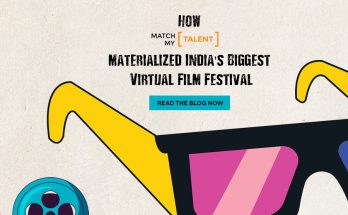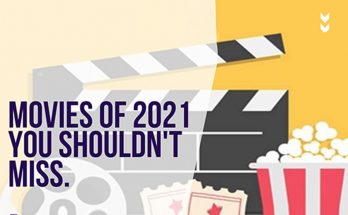Cinema has had a long, long journey, since its genesis in the 1890s, in terms of development and evolution, as opposed to that of the content industry, which has exploded within just a few years, especially with the onset of the pandemic and era of social isolation.
This doesn’t mean that the content industry is underdeveloped. In fact, the content industry has displayed a larger potential for inclusivity and democracy of opportunities, which clearly demonstrates its wholesome development.
While cinema dates back to 1893, the content industry as we know it today doesn’t have a particular traceable start date. In fact, even though the word ‘content’ is being used increasingly nowadays and has become the word of the day, whether used or unused, a buzzword or not a buzzword, the need for content consumption has always existed, parallel to the existence of men. This need can be seen in the drawings illustrated on the walls of caves created by early men. All these drawings were also some form of content, meant for the entertainment of those cavemen.
In fact, these stories made their way to the silver screens, giving birth to cinema as we know it, because of this everlasting, undying need for content consumption.
That raises a concerning question:
What’s the Difference between Cinema and Content?
Even though content has become a buzzword only recently, it is giving a tough competition to cinema, especially because of the element of individual preference that content has introduced. Content serves many purposes for viewer satisfaction in regards to covering different umbrellas like entertainment, infotainment, shorts, specials, etc.
Content also encourages continuity of content consumption, like web series. You watch an episode and end up watching the entire series in one go. Cinema, or films, give closure by the end. Both are watchable, consumable content. But the difference is while cinema’s driving force are the talkies, which mostly run narratives in more or less a single, continuous run for the masses, but content has more scope to be divided according to in terms of runtime, and has a more individualistic element to it, making it a personalized commodity.
Cinema has taken a long time to evolve and experiment with new formulae and genres. A particular genre or formula, like Romance or Gangster, would dominate the box office for decades. On the other hand, due to rapid digitalization and connectivity, the content industry has been born with the ability to experiment with new ideas and genres.
Another point of difference is this: Content doesn’t necessarily have to be always in a coherent state. Say for e.g., The #Metoo movement that gained momentum in 2017 by shining a light on perpetrators of sexual violence, sexual abuse and rape culture. The stories and narratives that formed the entirety of the content of the MeToo movement came from thousands of different accounts of different people. Even though these accounts were coming from different people, it formed a whole big narrative by itself, giving filmmakers an opening to create cinema based on this content. The 2019 film Bombshell was based on the content of Metoo movement.
What are the similarities between Content and Cinema:
The most obvious similarity is the power of messaging, or in other words, shaking up perspectives, whether good or bad. Cinema, at one time, and in some cases even today, peddled wrong messages. Notions of toxic masculinity were often portrayed as heroism, LGBTQ personas often portrayed as a caricaturish imp, women wearing certain clothing as immoral or femmes fatale, a danger to society. In the cinema of 80s and 90s India, a privileged respected hero desperately pursuing a particular woman who scorns him, not taking NO for an answer, was a plot point that was glamorized and too often normalized. The eve-teasing portrayed through songs presented a very wrong picture of female desire and sexuality. But in time, many films and cinema took the initiative of proliferating the right message, with films like Taare Zameen Par, Masaan, Pad Man, 3 Idiots, etc.
Content also has the same kind of power, whether coherent or incoherent, fictional or non-fictional.
Non-fictional commercial content, like the fairness ads of Fair and Lovely, has even until recently spread the very problematic message of female empowerment through fairer complexion. The same commercial brand has recently changed its entire message, replacing ‘Fairer complexion’ with ‘Glowing Skin’. This is an example of non-fictional content having the power to shift perspectives through its messaging, through both positive and negative messages.
Who Came First? The Chicken or the Egg?
Is Cinema Content or According to THE NATIONAL SCIENCE AND MEDIA MUSEUM
‘Cinematography is the illusion of movement by the recording and subsequent rapid projection of many still photographic pictures on a screen’.
Shortly, people realized that infographic content should be compiled and stocked for generations to be able to cherish; its evolution gave birth to what we call, modern cinema.
So does that mean that content mentored cinema? Partially correct but let’s not overlook that beyond the golden curtains, moving scenes and occasionally snarky acting, content covers something far greater or bigger, something that sometimes cannot fall into the category of cinema. It demonstrates all kinds of narratives that cannot fit into the format of cinema.
Consider this. A documentary filmmaker follows an activist who fights for the rights of a marginalized community and creates a feature documentary film on his journey. The documentary will fall under the category of cinema and also be called content. But then, consider this. The activist pens an original slogan to summarize the pain of a marginalized community and uses it to arouse other people to his cause. This slogan is also some form of content because even if it consists of two lines, it carries a narrative within it. The poignant, repressed story of the marginalized community. So this slogan becomes content, specifically the content of the activist.
But this slogan does not fit into the format of cinema, since it cannot possibly be played on the silver screens, it cannot be considered cinema.
So are they identical? Not completely. Are they similar? Yes! They both have a structure of the narrative, and both give people something to chew on.
Cinema is more short-term, while content serves the big cheese for ideas.
The Conclusion:
Through all the observations and arguments, the only logical conclusion derives is that Content and Cinema share some similarities, but are not identical. They share some commonalities because cinema has actually emerged from content, even though the word ‘content’ has become the buzzword only recently. This is because we have now reached the age when human beings’s needs for content consumption has moved beyond cinema and feature films, and cinema is no more the only form of content (or narrative format)
People now like to consume a variety of content forms nowadays, like short stories, comedy specials, short videos, long videos, books, coffee table book, novels, blogs, songs, raps, advertisements, sketches, web series, tv-series….basically every material consumable for entertainment purposes.
So it can be said that cinema is actually a part of content, but just a part of it. Cinema is like a drop in the sea of content. It’s like the old saying “all thumbs are fingers but not all fingers are thumbs.”








